Mexican art stands out with its vibrant and captivating paintings, showcasing a unique and unmistakable identity. It serves as a powerful representation of the country’s deep-rooted heritage, traditions, and historical narratives. The impact of Mexican Painters extends beyond national borders, gaining international recognition and acclaim.
In this article, we will take a look at and explore the lives of ten of the most famous Mexican Painters of all time.
Frida Kahlo

Frida Kahlo, a renowned Mexican artist, emerged from a life filled with adversity and physical challenges. Born in Coyoacán, Mexico, she encountered the harsh realities of illness from an early age, battling complications from polio and suspected spina bifida.
However, it was a fateful day on September 17, 1925, that forever altered the course of Kahlo’s life. Traveling in a bus alongside her friend Alex, their journey took an unexpected turn when the vehicle collided with a street trolley car. The severe injuries sustained in the accident caused her to endure a staggering 35 operations throughout her lifetime. Tragically, the accident rendered her unable to bear children, leaving a lasting emotional void.
It was during her extended periods of hospitalization that Frida Kahlo discovered her passion for painting. This newfound passion for art became her refuge. She decided to abandon her medical career in favor of a life devoted to art.
Frida Kahlo’s self-portraits have firmly established her as a preeminent figure in the realm of self-portraiture. Her art delves into the depths of her personal experiences, offering profound insights into themes of identity, pain, and resilience. She said, “I paint myself because I am so often alone and because I am the subject I know best.”
Beyond her artistic brilliance, Frida’s legacy extends to her status as an enduring feminist icon. The unapologetic manner in which she lived her life, challenging societal norms and embracing her individuality, continues to inspire generations of women throughout the world.
Today, Frida Kahlo is one of the most influential and celebrated modern artists, captivating audiences with her extraordinary talent. Her impact transcends artistic boundaries, as she remains a symbol of courage, resilience, and artistic brilliance, forever etching her name among the revered painters and feminist icons.
Joaquín Clausell

Joaquin Clausell was born om June 16, 1866, in Campeche, Mexico. He is widely regarded as a prominent advocate for impressionism within Mexican culture. From a young age, Clausell possessed a deep love for drawing, although he briefly pursued engineering studies. He eventually became a journalist but his fictional stories concerning the Tarahumara people resulted in his imprisonment.
He escaped from jail and made his way to the city of Paris, where he discovered a profound admiration for the art movement of impressionism. However, his artistic production faced a setback during the tumultuous years of the Mexican Revolution, temporarily preventing him from creating new works.
Clausell’s artistic focus primarily revolved around capturing the essence of landscapes and seascapes. While he may not have been closely affiliated with his fellow Mexican artists during his lifetime, his talent did not go unnoticed. Notably, Diego Rivera recognized Clausell’s remarkable ability to portray Mexico’s natural beauty, proclaiming him as the country’s foremost landscape artist.
Since 1995, Clausell’s artistic legacy has garnered increasing recognition at the National Art Museum in Mexico. Through his dedication to impressionism and his ability to capture the beauty of Mexico’s scenery, Joaquin Clausell has left a lasting mark on the Mexican art scene, solidifying his position as a visionary and celebrated painter.
Jose Clemente Orozco
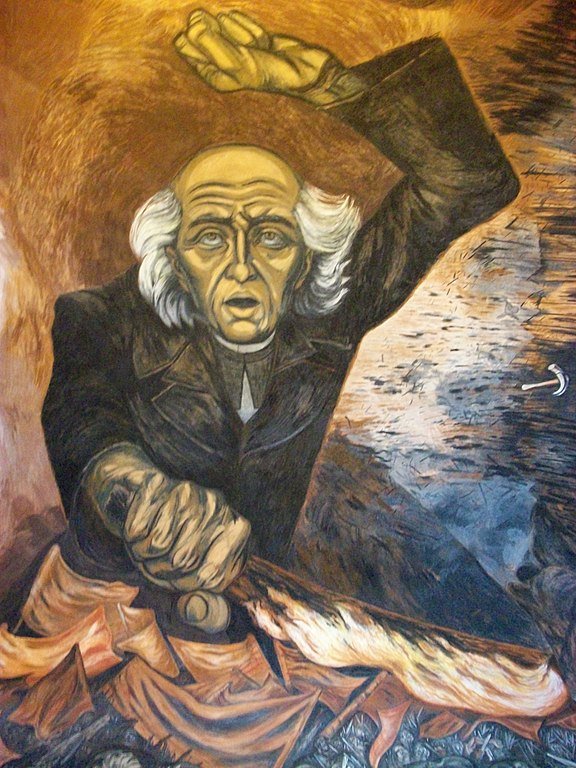
José Clemente Orozco, one of the esteemed “los tres grandes” (three greats) of Mexican muralism. Known for his intricate artistic compositions. Orozco’s artistic style was multifaceted, incorporating a fusion of elements that showcased his versatility. His works embraced modernist abstraction, allowing for the exploration of emotions and expressive techniques.
His compositions and modeling displayed a touch of Renaissance influence, lending a sense of timeless grandeur to his murals. However, Orozco’s early artistic endeavors, heavily influenced by European traditions, left him dissatisfied, leading him to embrace forms and iconography derived from Mexico’s indigenous, pre-colonial, and pre-European art.
José Clemente Orozco emerged as a leading figure in the realm of Mexican Muralism. Orozco’s murals not only adorned walls but also served as a touching representation of the social and political realities of Mexico and captured the complexities of the nation’s history.
Diego Rivera
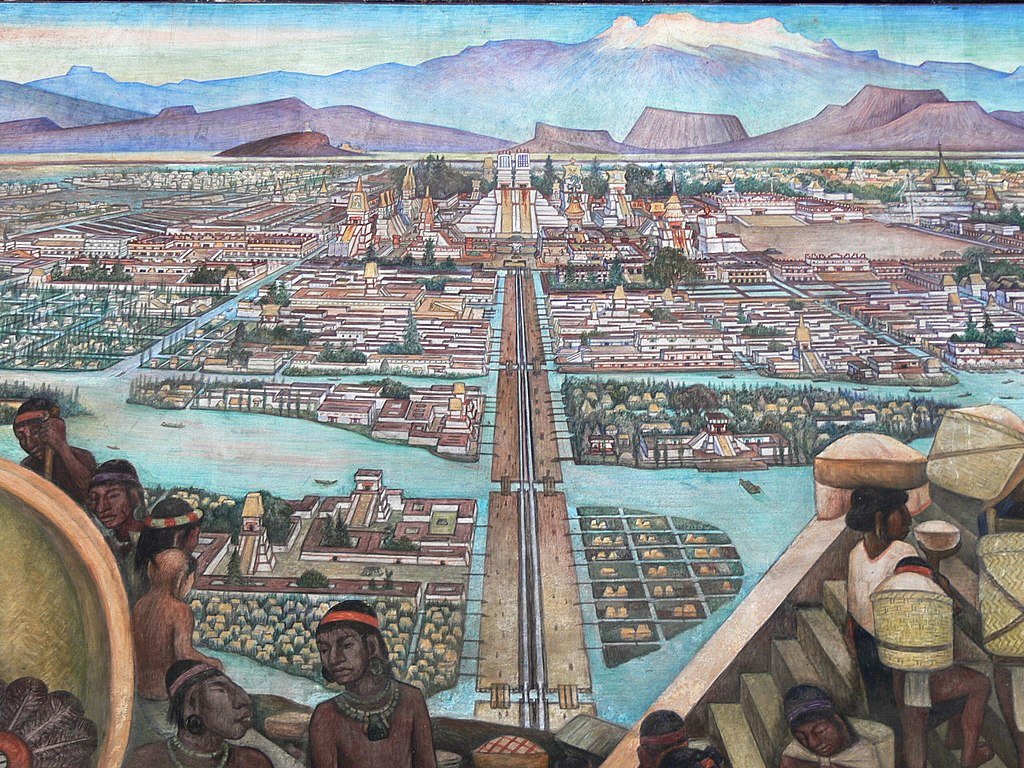
Diego Rivera was born in Mexico as a twin on December 8, 1886. He was profoundly influenced by the compassionate nature of his parents, who dedicated themselves to supporting the less fortunate in their community. Rivera’s artistic inclinations became evident at the young age of three as he joyfully adorned any available surface, from walls to floors, with his drawings.
Rivera studied at the San Carlos School of Fine Arts, where his profound love for capturing the essence of Mexican culture blossomed. Eager to expand his horizons, he embarked on international studies, venturing to Paris and Spain, collaborating with fellow artists along the way.
It was during his exploration of Italy’s Renaissance frescos that Rivera discovered his true calling. He found inspiration in the grandeur and technique of these ancient works. Rivera’s personal life further intertwined with the art world when he married another iconic Mexican artist, Frida Kahlo.
Diego Rivera’s impact as an artist remains significant, his ability to capture the spirit of Mexican culture, combined with his dedication to social issues, has left an enduring mark on the artistic landscape. Rivera’s murals and artistic vision continue to captivate audiences, standing testimony to the power of art in conveying cultural narratives.
Leonora Carrington

Leonora Carrington was born on April 6, 1917, into a privileged family involved in the textile business in England. The British-born Mexican artist’s early education was predominantly delivered by private tutors or within the confines of convent schools.
Carrington had a rebellious nature growing up, prompting her family to send her to Florence to pursue art studies. Subsequently, she continued her artistic education at the esteemed Ozenfant Academy in London. Carrington’s artistic genius began to flourish in 1937, upon meeting Max Ernst, a renowned figure in the Surrealist movement. This encounter marked a significant turning point in her artistic journey, leading her toward the realm of surrealism.
Carrington relocated to Spain, where she experienced a profound mental breakdown that would significantly shape her future artistic endeavors. Despite the challenges she faced, Carrington gained considerable recognition in the late 1940s as a remarkable female surrealist painter.
Leonora Carrington’s captivating displays were showcased at the prestigious Pierre Matisse Gallery, solidifying her status as an influential artist within the surrealist movement. Through her surreal and captivating works, she has left an artistic legacy that spans borders and defies conventions.
Gerardo Murillo Cornado
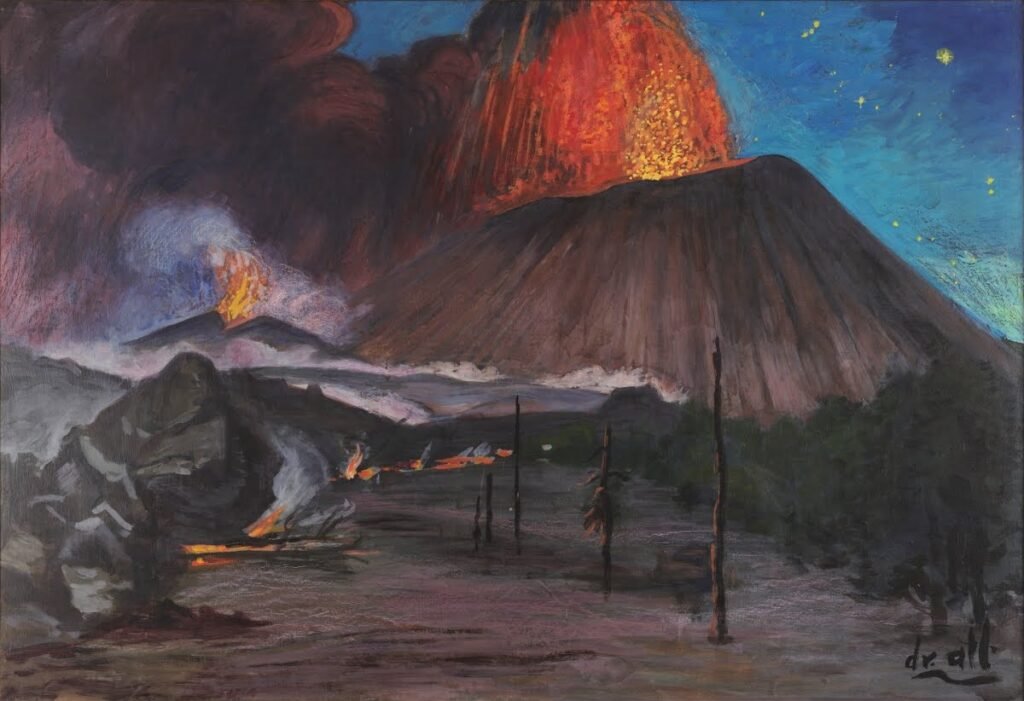
Gerardo Murillo Cornado is considered to be one of the vanguards of the Mexican movement for artistic nationalism. He played a pivotal role in shaping Mexico’s artistic identity in the aftermath of the Mexican Revolution.
He possessed an unwavering passion for the native art of Mexico, dedicating himself to the creation of a modern indigenous artistic style that would authentically express the spirit of the land. His most renowned works captured the Mexican landscape with fervor, focusing particularly on the Valley of Mexico and the majestic volcanoes of Popocatépetl and Ixtacihuatl.
He even took an Aztec name, Dr Atl to distance himself from his Spanish heritage, proudly embracing his Mexican Indian ancestors and their rich cultural heritage. Driven by a deep connection to his roots, Dr. Atl sought to celebrate and preserve Mexico’s artistic heritage while infusing it with a contemporary sensibility. His artistic contributions not only showcased the beauty of the Mexican landscape but also served as a testament to the resilience and cultural richness of the Mexican people.
Gerardo Murillo Cornado laid the foundation for a distinct artistic expression rooted in indigenous traditions. His legacy continues to inspire artists, fostering a deep appreciation for Mexico’s natural wonders and cultural heritage.
Maria Izquierdo
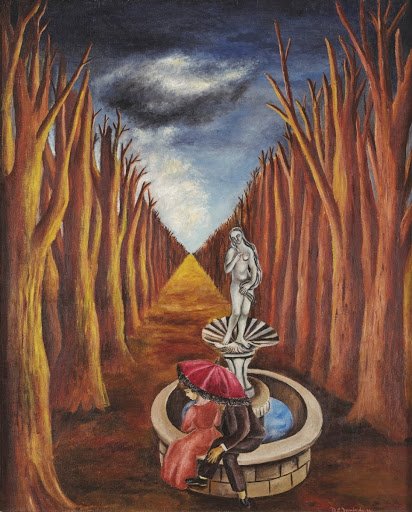
Maria Izquierdo was born on October 30, 1902, in San Juan de los Lagos, Mexico. She had a challenging upbringing under the care of her grandparents and was pressured into an early marriage.
She eventually found the courage to escape her husband in 1926, seeking refuge in the vibrant city of Mexico City. In 1928, Izquierdo’s artistic journey took a significant turn as she enrolled at the esteemed San Carlos Academy of Fine Arts. It was during this formative period that she crossed paths with Diego Rivera, who recognized her exceptional talent and quickly became her most influential mentor.
Izquierdo held a remarkable solo exhibition soon after in Mexico City, where she forged a creative alliance with another emerging artist, Rufino Tamayo. Her artistic oeuvre predominantly featured still lifes and portraits, characterized by the bold and vibrant colors she expertly employed using oil paints and watercolors.
Maria Izquierdo’s impact extends beyond her artistic contributions. She broke gender barriers and defied societal expectations to pave the way for other female artists. Her deep-rooted love for Mexican culture shone through in her artwork, which served as a visual celebration of her heritage.
Rufino Tamayo

Rufino Tamayo, a prolific artist, explored a vast array of artistic media, including woodcuts, lithographs, and etchings. Notably, in collaboration with Mexican painter and engineer Luis Remba, Tamayo pioneered a groundbreaking technique called Mixografia. This innovative medium revolutionized the art of fine printing, enabling the creation of prints imbued with a remarkable three-dimensional texture.
With great satisfaction, Tamayo embraced the Mixografia process, ultimately producing approximately 80 exquisite Mixographs. His artistic style was distinguished by the harmonious fusion of modern European painting movements, such as Cubism and Surrealism, with quintessential Mexican folk themes. This distinctive amalgamation of influences lent his artworks a captivating and culturally rich essence.
Tamayo’s artistic philosophy extended beyond technique and subject matter. He deliberately limited his color palette, firmly believing that such restraint imbued his art with greater force and profound meaning. By employing a select range of colors, Tamayo achieved a visual impact that transcended the canvas, inviting viewers to delve deeper into the essence of his creations.
Rufino Tamayo’s legacy encompasses not only his technical innovations but also his ability to bridge diverse artistic styles and cultural influences. Through his masterful integration of European modernism and Mexican folklore, Tamayo’s art became a vibrant reflection of his unique vision and the cultural tapestry of Mexico. His legacy continues to inspire artists and enthusiasts alike, serving as a testament to the power of artistic synthesis and the potential for profound expression.
David Alfaro Siqueiros
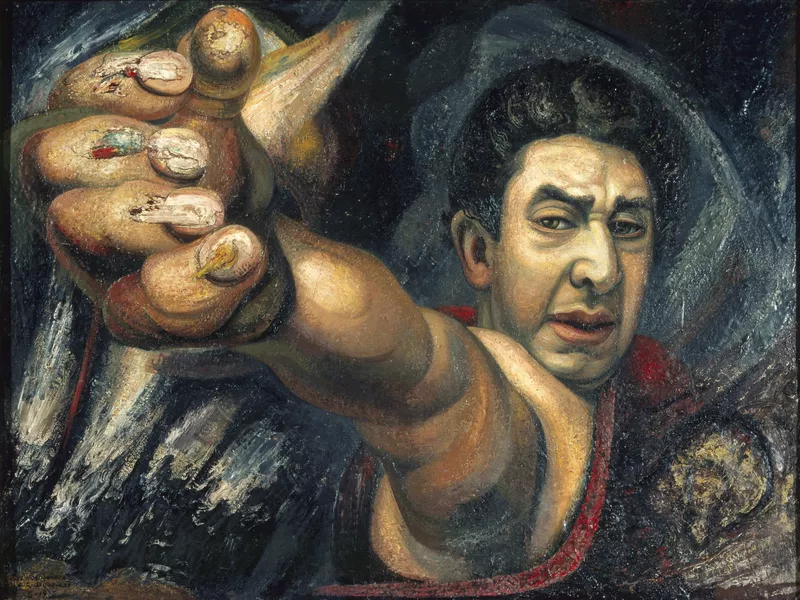
David Alfaro Siqueiros, a prominent figure among the “los tres grandes” of Mexican muralism, alongside Diego Rivera and José Clemente Orozco, stands out as the most radical and politically engaged artist of the trio. His artistic vision not only encompassed technique and composition but was deeply rooted in his unwavering commitment to Marxist ideology.
Infused with a resolute leftist perspective, Siqueiros’s art became a powerful medium for portraying the complex social, political, and industrial transformations of his era. His unwavering dedication to his political convictions led him to reject any commission that conflicted with his ideology. His monumental murals, adorning Mexican government buildings, showcase his dynamic and vigorous style, capturing dramatic interplays of light and shadow.
Beyond his artistic endeavors, Siqueiros was a fearless political activist who faced imprisonment multiple times due to his tireless work in labor unions and unwavering commitment to communist political activities. His art and activism were inseparable, reflecting his steadfast belief in art’s ability to effect social change and challenge the existing power structures.
David Alfaro Siqueiros’s legacy extends far beyond his artistic achievements. He serves as a symbol of unwavering dedication to political ideals, employing his creative prowess to shed light on the struggles and aspirations of the working class. His murals, filled with vibrant energy and compelling narratives, continue to captivate audiences, sparking dialogue and inspiring reflection on the pressing issues of our time.
Remedios Varo
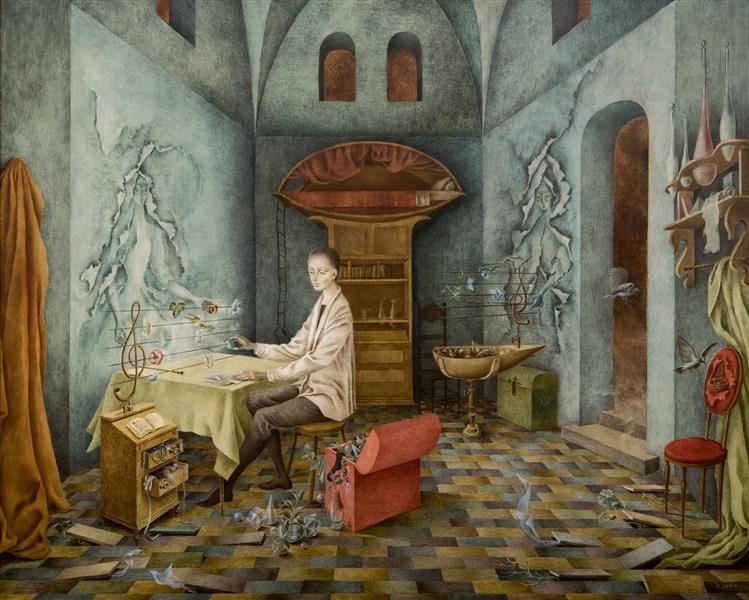
Remedios Varo Uranga, an influential female surrealist painter of the early 20th century, defied the male-dominated art world with her unique approach. Her upbringing in a multicultural environment and her father’s influence shaped her artistic style. With her father’s guidance, Varo honed her technical drawing skills and nurtured her imaginative side through fantasy books. Torn between her father’s technical and philosophical teachings and her deeply religious mother’s beliefs, Varo gravitated towards Surrealism as a means to express her inner struggles.
In her paintings, Varo rebelled against the restrictive practices of Catholicism, combining mystical beings and utopic machines to create her enchanting style. She rejected Christian and religious symbolism prevalent among other surrealists of the time. Through her art, Varo conveyed her feminist beliefs and challenged the dominance of male artists.
Female painters faced limited recognition during that era, and Varo, along with her female surrealist counterparts, struggled for visibility in a male-dominated scene. Her artwork often depicted confined women in isolated spaces, symbolizing the restrictions placed on female artists. The crescent moon frequently appeared, representing femininity and the introverted nature of Varo as a female artist.
Varo’s signature techniques included juxtaposing elements, employing fumage to create a mystical atmosphere, and using balanced colors and contrasts. She created androgynous characters resembling herself on canvas. By juxtaposing nature and machines, emotions and logic, Varo constructed a multidimensional world where she embodied the roles of a woman artist, mystic, scientist, and spiritual being.
